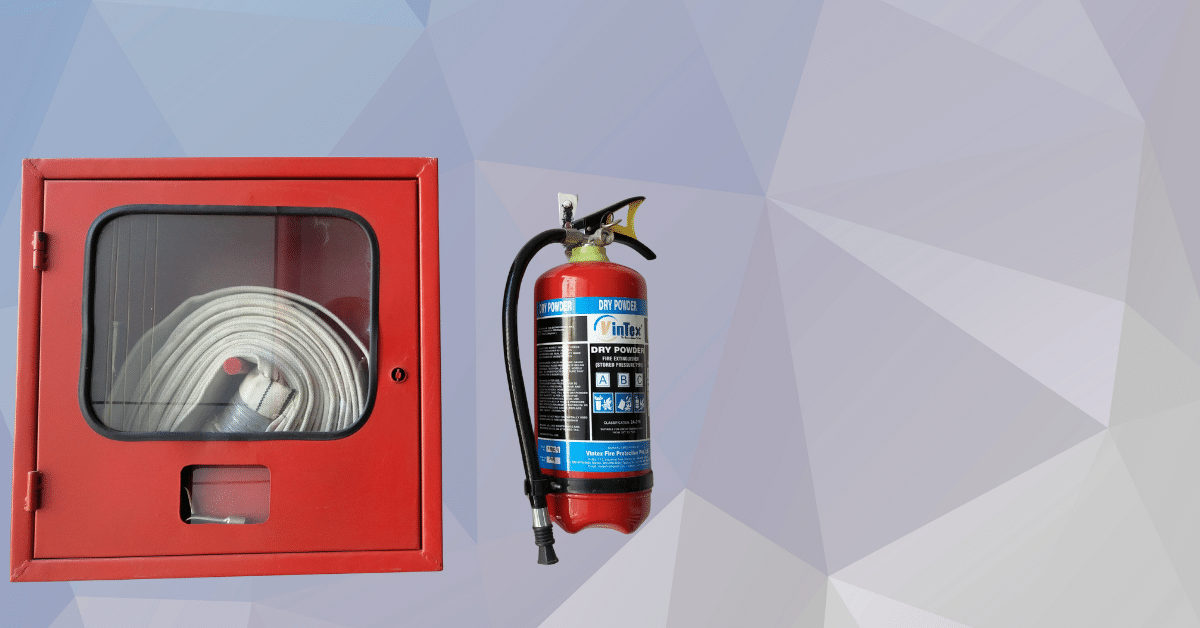OSHA Training: Understanding OSHA 10 and OSHA 30
Want to know more about OSHA training? If yes, then this article is for you.
Believe us or not, OSHA training is important, not for one but for many reasons.
It provides employees and employers with the knowledge and skills they need to recognize and prevent potential workplace hazards.
By educating workers and employers about safety and health, OSHA training helps to prevent workplace injuries, illnesses, and deaths.
Furthermore, the law often requires OSHA training.
OSHA requires many employers to provide safety training to their employees.
It also requires workers to complete OSHA training before starting work.
Completing OSHA training can also help workers stay up-to-date on the latest safety and health regulations, which can be useful when seeking employment.
Moreover, OSHA training helps improve workplace safety culture by promoting a greater understanding and appreciation of the importance of safety and health in the workplace.
Workers and employers can work together to create a safer, healthier work environment by participating in OSHA training.
Save Thousands Of Dollars With Coggno Prime Subscription
What Is OSHA?
The Occupational Safety and Health Administration (OSHA) is a federal agency within the United States Department of Labor.
OSHA’s primary goal is to prevent workplace injuries, illnesses, and deaths.
It sets and enforces safety standards and provides education, outreach, and assistance to employers and employees.
OSHA—
- Has the authority to inspect workplaces;
- Fine employers for safety violations; and
- Offer assistance to employers and employees in developing and implementing effective safety programs.
The agency also provides information and training resources to help workers recognize and prevent potential hazards in the workplace.
Related: A Complete Guide To OSHA—Occupational Health And Safety Administration
What Is OSHA Training?
OSHA training is a program that the Occupational Safety and Health Administration offers.
It educates workers and employers about workplace safety and health.
The training covers a range of topics, including:
- Hazard recognition and prevention;
- Safety programs and policies;
- Communication and recordkeeping; and
- Health and safety best practices.
The training helps in preventing:
- Workplace injuries;
- Illnesses; and
- Deaths
by providing workers and employers with the knowledge and skills, they need to identify and control potential hazards in the workplace.
There are two main types of OSHA training available—the OSHA 10-Hour Training and the OSHA 30-Hour Training.
The OSHA 10-Hour Training provides a basic overview of OSHA regulations and best practices. The training typically takes two five-hour sessions to complete.
The OSHA 30-Hour Training is a more comprehensive course covering more detailed OSHA regulations. This training typically takes over five days to complete.
OSHA recognizes both courses as equivalent to its outreach training programs.
Furthermore, the courses are available for construction, general industry, and maritime workers.
Want to know more? Subscribe to Introduccion A OSHA (Course)
What Is OSHA 10-Hour Training?
OSHA 10-hour training is a program designed to provide workers with a basic understanding of occupational safety and health standards, policies, and regulations.
The training covers a wide range of topics, including electrical safety, fall protection, hazardous materials, and fire safety.
The goal of OSHA 10-hour training is to reduce the number of work-related injuries and illnesses and to promote a safe and healthy work environment.
The training typically offers itself as a 10-hour course, with the option of taking it online or in a classroom setting.
Related Training Course: OSHA Fall Safety Training 2022 (Course)
What Are The Features Of OSHA 10-Hour Training?
The OSHA 10-Hour Training covers the following features:
Overview Of Osha Regulations And Standards
Participants will learn about the main OSHA regulations that apply to their workplace and their rights and responsibilities as workers.
Hazard Recognition And Prevention
Participants will learn how to identify potential workplace hazards, such as falls, chemical exposure, and electrical hazards, and how to prevent them.
Safety Programs And Policies
Participants will learn about the importance of workplace safety programs, including emergency action plans and injury and illness prevention programs.
Communication And Recordkeeping
Participants will learn the importance of communication between employers and employees regarding safety and health and maintaining accurate safety records.
Health And Safety Best Practices
Participants will learn about best practices for protecting workers from harm, including using personal protective equipment and safe work practices.
Note: The OSHA 10-Hour Training is intended to provide a general overview of OSHA regulations and best practices and is typically completed in two five-hour sessions. The course is for entry-level workers and supervisors in the construction, general, and maritime industries.
What Is OSHA 30-Hour Training?
OSHA 30-hour training is a comprehensive training program for workers in the construction industry.
The program is designed to provide a more in-depth understanding of occupational safety and health standards, policies, and regulations.
The training covers a wide range of topics, including:
- Safety and health program management;
- Fall protection;
- Electrical safety;
- Scaffold safety; and
- Personal protective equipment.
The goal of the OSHA 30-hour training is to help workers identify and prevent potential workplace hazards and to promote a safe and healthy work environment.
The training typically offers itself as a 30-hour course, with the option of taking it online or in a classroom setting.
Related Training Course: OSHA Electrical Safety Training; Lockout/Tagout 2022 (Course)
What Are The Features Of OSHA 30-Hour Training?
The OSHA 30-Hour Training covers the following features:
Comprehensive Coverage Of Osha Regulations And Standards
Participants will receive a more in-depth look at OSHA regulations, including an overview of the most frequently cited standards and regulations.
Hazard Recognition And Prevention
Participants will receive more extensive education on hazard recognition and prevention, including training on specific hazards, such as hazardous materials and machinery.
Safety Programs And Policies
Participants will learn about developing, implementing, and maintaining effective safety programs and policies, including safety committees and incentive programs.
Communication And Recordkeeping
Participants will receive more extensive education on communication and recordkeeping, including training on the proper use of OSHA forms and incident reporting procedures.
Health And Safety Best Practices
Participants will learn about best practices for protecting workers from harm, including personal protective equipment, safe work practices, and ergonomics.
Note: The OSHA 30-Hour Training is designed for supervisors and managers to comprehensively understand OSHA regulations and best practices. The course is typically completed in four- to six-hour sessions over five days. It is available for workers in the construction, general industry, and maritime industries.
What Is The Difference Between OSHA 10-Hour Training And OSHA 30-Hour Training?
The main difference between OSHA 10-hour training and OSHA 30-hour training is the duration and depth of the training.
OSHA 10-hour training is a basic program that provides workers with a general understanding of occupational safety and health standards, policies, and regulations.
The training covers a broad range of topics in a 10-hour course.
OSHA 30-hour training, on the other hand, is a more comprehensive program that provides workers with a deeper understanding of occupational safety and health.
The training covers a broader range of topics in greater detail, includes advanced topics such as safety and health program management, and is a 30-hour course.
In summary, the OSHA 30-hour training is more extensive and covers more topics in greater detail than the OSHA 10-hour training.
Related Training Course: OSHA Recordkeeping & Documentation
What Training Is better—OSHA 10-Hour or OSHA 30-Hour?
The answer to which training is better, OSHA 10-hour or OSHA 30-hour, depends on the individual’s needs and job requirements.
OSHA 10-hour training is ideal for entry-level workers who need a basic understanding of occupational safety and health standards, policies, and regulations.
It is also suitable for workers with limited exposure to workplace hazards and need to understand the basics of workplace safety.
OSHA 30-hour training, on the other hand, is for workers with a higher level of responsibility and requires a more in-depth understanding of occupational safety and health.
This training is suitable for supervisors, managers, and others who have a greater role in creating and maintaining a safe and healthy work environment.
The bottom line for this blog is, OSHA 10-hour and OSHA 30-hour training are valuable for workers in different capacities.
It depends on the individual’s job requirements and level of responsibility to determine which training is better for them.
OSHA 10-Hour Training Vs. OSHA 30-Hour Training—Key Takeaway
The OSHA 10-Hour Training and OSHA 30-Hour Training provide health and safety education to workers in the United States.
The OSHA 10-Hour Training is a basic overview of OSHA standards and policies.
However, the OSHA 30-Hour Training provides a more in-depth and comprehensive study of OSHA regulations and guidelines.
Both courses help workers recognize and prevent potential workplace hazards and are recognized by OSHA as equivalent to its outreach training programs.
The length of the courses reflects the difference in depth of content, with the OSHA 30-Hour Training taking longer to complete.





















